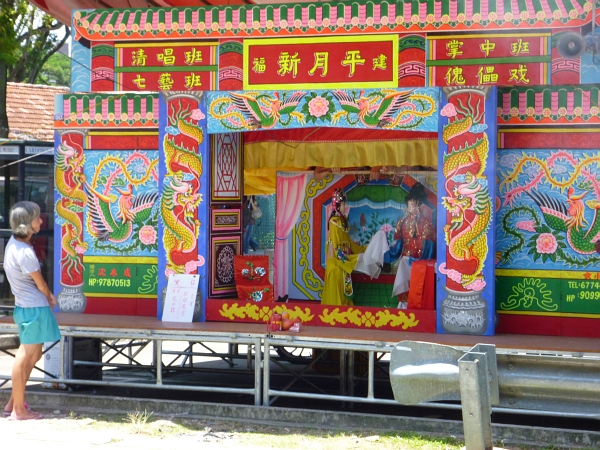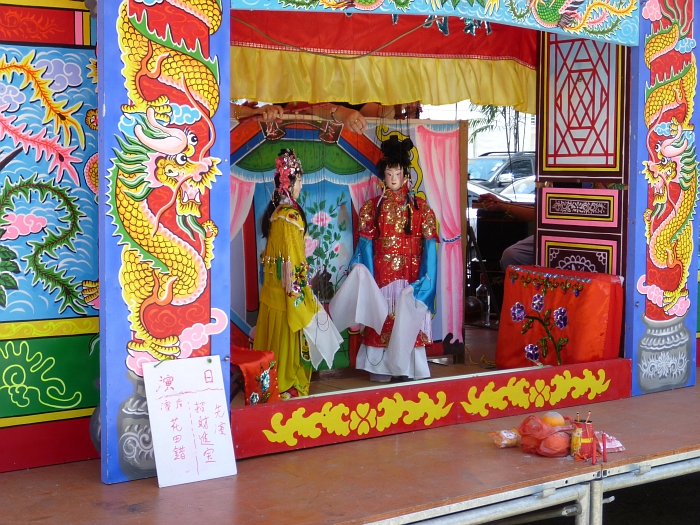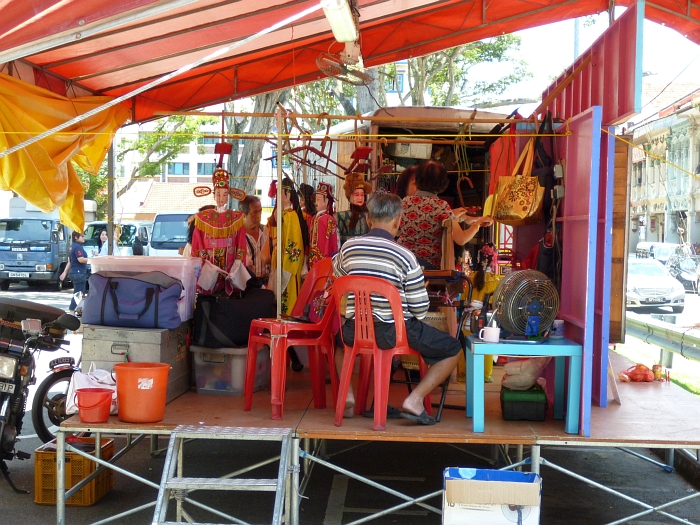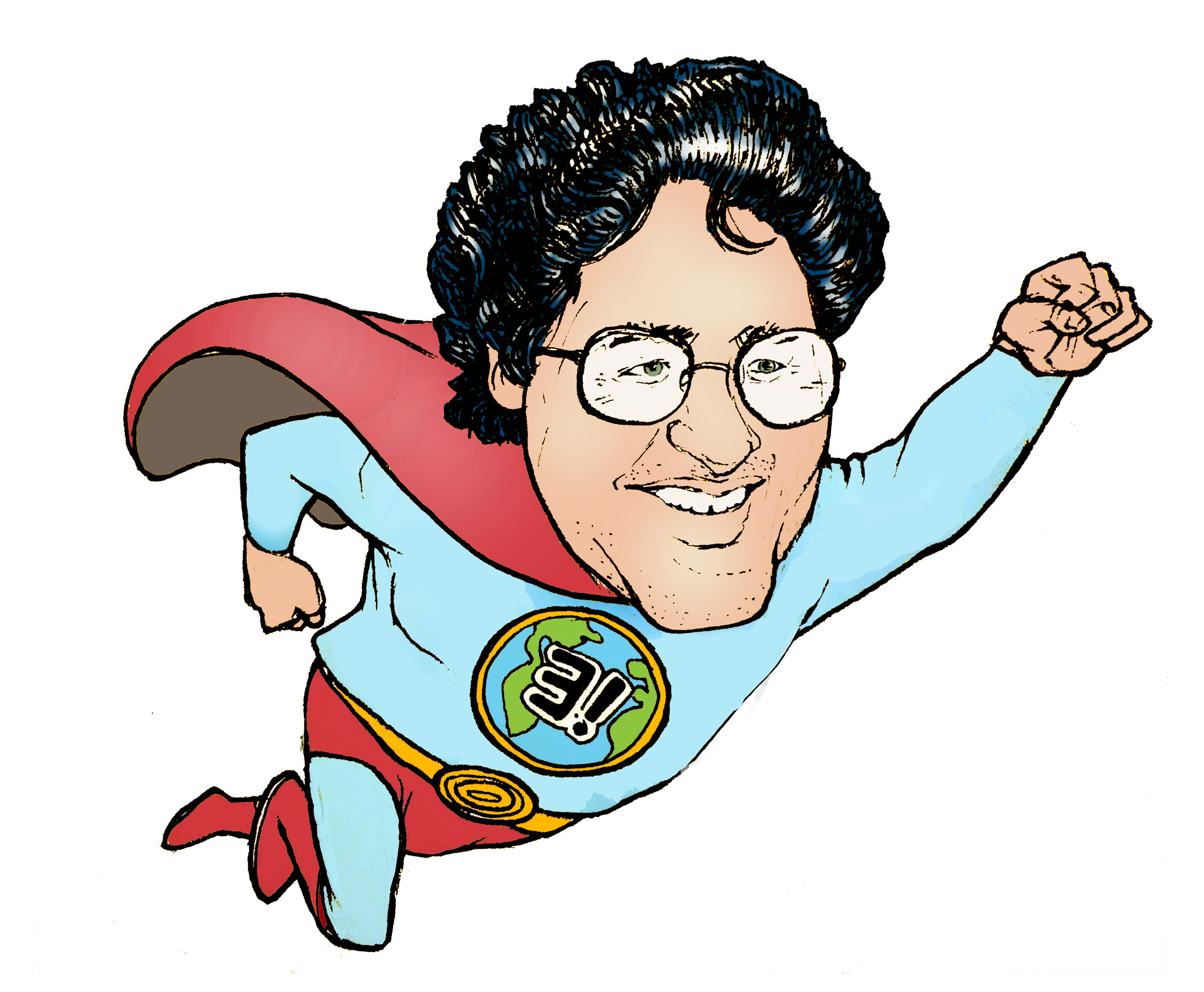

We were lucky: it was some sort of Chinese holiday, and a clan association near Lorong Bachok had put on a puppet show! First we watched it from the front; then we walked around back and watched the folks doing the show, and playing the accompanying music. It was great fun though I didn't understand a word of it.
Note the offering of fruit and incense, especially visible in the third photo. There were also some big trash cans full of burning incense, which made enough smoke that it was hard to take good photographs!






April 19, 2011
I used to spend a lot of time discusssing physics with Greg Weeks on the newsgroup sci.physics.research. Recently he resurfaced in my life. It turns out he's a big Stravinsky fan. That's a good thing, because just now I happen to be trying to learn more about the later Stravinsky, having long since overdosed on the Firebird, Petrushka and The Rite of Spring. The last was my favorite piece of music for a while around the age of 17: the crashing, lurching rhythms of the finale seemed to "blast music into a wholly new realm of possibilities", as Peter Gudmann nicely puts it. It made the hair on the back of my neck stand on end!
Recently I'd been listening to Stravinsky's Symphony in C, Concerto in D and Symphony of Psalms, trying to tell if I like them or merely admire them. But Greg reminded me how great Stravinsky's 1957 ballet Agon is. "Agon" is Greek for "struggle", and this piece is a curious struggle of baroque and 12-tone styles. I like the massed trumpets and plucked string instruments (harp and mandolin). And I especially like the restless opening theme, which harks back to Petrushka somewhat.
Check it out:
Greg writes:
... let's see, what are my favorite pieces by Stravinsky, in chronological order:Greg thinks that Stravinsky was the last great composer and since then classical music has gone to hell. I think that classical music in its classical sense died with the end of "western civilization" and the rise of world culture, which is a much more complex and so far inchoate thing. Today an ambitious composer cannot safely neglect rock, rap, techno, ambient, jazz, bossa-nova, gamelan, qawawali, ragas and talas. And this makes it very difficult for music to be "classical" or perfect in any sense. It can still be exciting, though. That's what I think: we're in messy transitional phase, with one kind of music dying and another struggling to be born.the three early ballets
Les Noces (The Wedding)
Renard
L'histoire du Soldat (The Soldier's Tale)
Symphonies of Wind Instruments
Oedipus Rex (although I have trouble with operatic bellowing)
Apollo (especially the climax)
Symphony of Psalms
Dumbarton Oaks
Symphony in Three Movements
Mass
Cantata
Septet (inspired by the Schönberg Suite)
Agon
My special favorites are Les Noces, Mass, and Agon.
I may try to convince Greg that Steve Reich wrote some great music. I'm not sure it's classical, but it has some of the same purity, and I think some of it is great. I think that Reich's Sextet reminds me most of Stravinsky: it's the spiky chords and tense rhythms. Especially, say, the beginning of the 3rd movement here. That could not exist without The Rite of Spring... but it has some of the "combinatorial" feel of Bach.
The lyrics on this album are by the poet Rick Holland.
April 22, 2011
More on Stravinsky from Greg Weeks:
Stravinsky had greater periods and lesser periods. Let's review them.A. 1910-1913: the three great ballets.
B. 1914-1921: a complete renunciation of the three great ballets. This is known as his "Russian" period and cannot be described in words. When you hear "Les Noces" and "Renard" you will know. But the period also contains minor experimental pieces that sound like nothing else on earth. And the period contains a peculiar strain of cosmopolitanism, in which he takes existing styles and makes them his own, somehow. A hybrid piece (and a masterwork) is "The Soldier's Tale".
C. 1922-1925: neo-classicism, phase 1. Here, the idea of taking existing styles and making them his own becomes his artistic credo. The risk here is that you can't really hear him making them is own at times. His music became diminished and uninteresting.
D. 1926-1933: neo-classicism, phase 2. Stravinsky continues with neo-classicism, but he breaks free of his dogmatic fetters. A series of masterworks — all very different, of course -- ensues: Oedipus Rex, Apollo, The Fairy's Kiss (well, almost a masterwork), the Symphony of Psalms (which actually harks back to the Russian period), and Persephone (which must be heard conducted by Craft). This is a great period.
E. 1933-1951: neo-classism, phase 3. Stravinsky suffers an incredible insult in France in 1934. He loses his wife, mother, and daughter in 1939. Fascism rises and falls. Stravinsky flees to America in 1940, knowing no English, and in trouble financially. Musically, these were lean years. The only masterworks that come to mind are Dumbarton Oaks (a light masterwork), Symphony in Three Movements, Orpheus (so say some; I don't), and Mass. He finishes with a neo-Mozartian 3-act opera, The Rake's Progress. At this point, the young Turks who've adopted Webern as their master are laughing and hooting at Stravinsky premieres. (These radicals even denounced Schönberg as insufficiently radical. SCHÖNBERG IS DEAD, screamed Pierre Boulez. Schoenberg the man, incidentally, was still alive.)
F. 1951-1960: transition to serial music. Arnold Schoenberg dies. Rather than letting Igor solve the musical crisis of Western civilization, which might well have been impossible, Robert Craft gently led Igor into the land of serialism. (12-tone and serialism intersect. In Stravinsky's case, not all of his series were 12-tone.) A series of masterworks — or at least very ear-teasing pieces — emerges: Cantata, Septet, Canticrum Sacrum, Agon, Threni, and Movements. I can't quite love the latter two, but I do like Movements, and I bet that I would like Threni if the voices were without vibrato, like a Gregorian chant.
G. 1961-1967: 100% 12 tone. (Not quite 100%. There are some very fine exceptions. However:) A disaster. Horrible stuff from "A Sermon, a Narrative, and a Prayer" through Introitus. Of course, he was an established master, the subject of documentaries, apparently accepted by the young Turks, and so was happy. And as a final bloom of a dying tree, a near masterwork, Requiem Canticles. Robert Oppenheimer requested that it be played at his funeral.
H. 1968-1971: No more music. Stravinksy is frail and ill. He suffers from the fore-knowledge that he will never compose again. He fades until his death in 1971. During this entire period, Robert Craft maintains the fiction that Stravinsky is thriving by writing letters and reviews in his name. Much controversy eventually ensues.

© 2011 John Baez
baez@math.removethis.ucr.andthis.edu